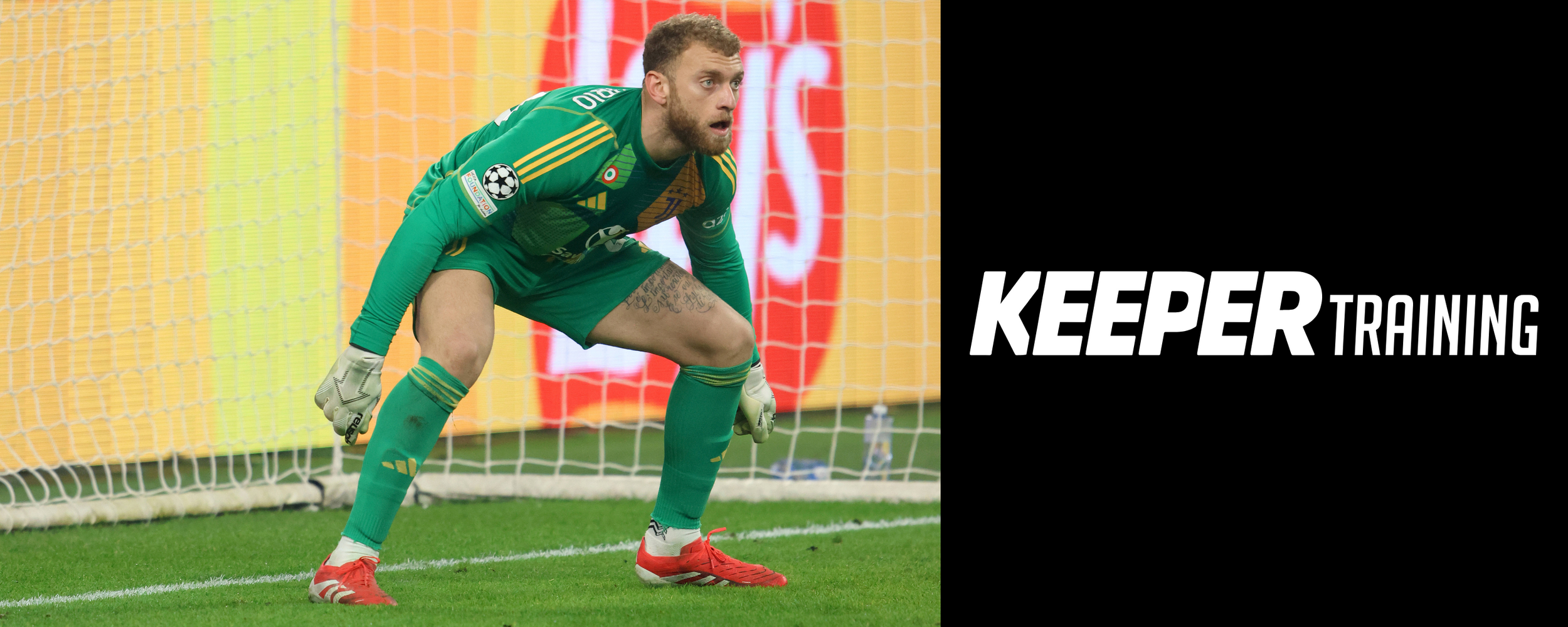Coaching Points: Basic Goalkeeper Positions for Goal & Space Defense
In modern goalkeeping, different basic stances are essential to react optimally to various game situations. We distinguish three main stances:
- Stance 1
- Stance 2
- Stance 3
Stances 1 and 3 are used primarily for goal defense, while stance 2 is applied in space defense.

Stance 1 (Goal Defense)
This position is adopted when the keeper expects shots from distance. Key coaching points:
✔️ Eyes: Always fixed on the ball.
✔️ Torso: Lean slightly forward.
✔️ Arms: Hang in front of the waist, elbows bent with tension.
✔️ Hands: Palms turned slightly inward, facing each other.
✔️ Knees: Bent.
✔️ Feet: Hip‑width apart, toes forward, weight on the balls of the feet.
Stance 2 (Space Defense)
Also called the “waiting stance,” this is used when the keeper faces indirect threats like crosses or through‑balls. Key coaching points:
✔️ Eyes: On the ball.
✔️ Torso: Lean slightly forward and twist slightly to one side.
✔️ Arms: Hang in front of the waist, elbows bent with tension, slightly wider.
✔️ Hands: Palms facing each other, fingers slightly spread.
✔️ Knees: Bent.
✔️ Feet: In a staggered stance, toes forward, weight on the balls of the feet.
Stance 3 (1‑on‑1 Goal Defense)
Used in one‑on‑one situations when a close‑range shot is expected. Key coaching points:
✔️ Eyes: On the ball.
✔️ Torso: Lean forward, hips lowered.
✔️ Arms: Almost straight at the sides to appear wider.
✔️ Hands: Palms facing the shooter.
✔️ Knees: Deeply bent (deeper the closer to the attacker).
✔️ Weight: On the balls of the feet.
✔️ Pressure on the Ball: Move as close as possible to the ball to reduce shooting angle.
These coaching points will help goalkeepers adopt the right stance in any situation, boosting their reaction speed and effectiveness.